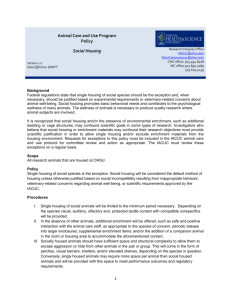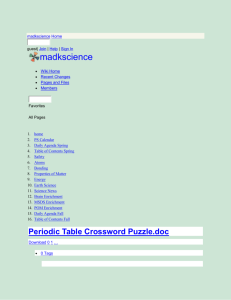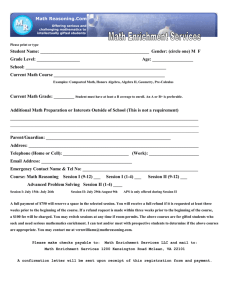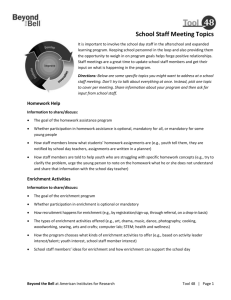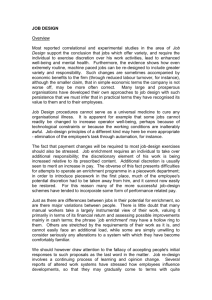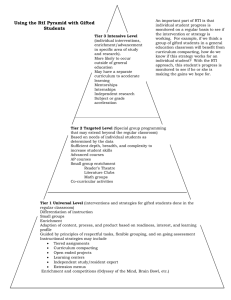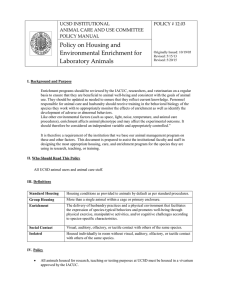Drexel University Animal Care and Use Committee Policy for Animal Enrichment
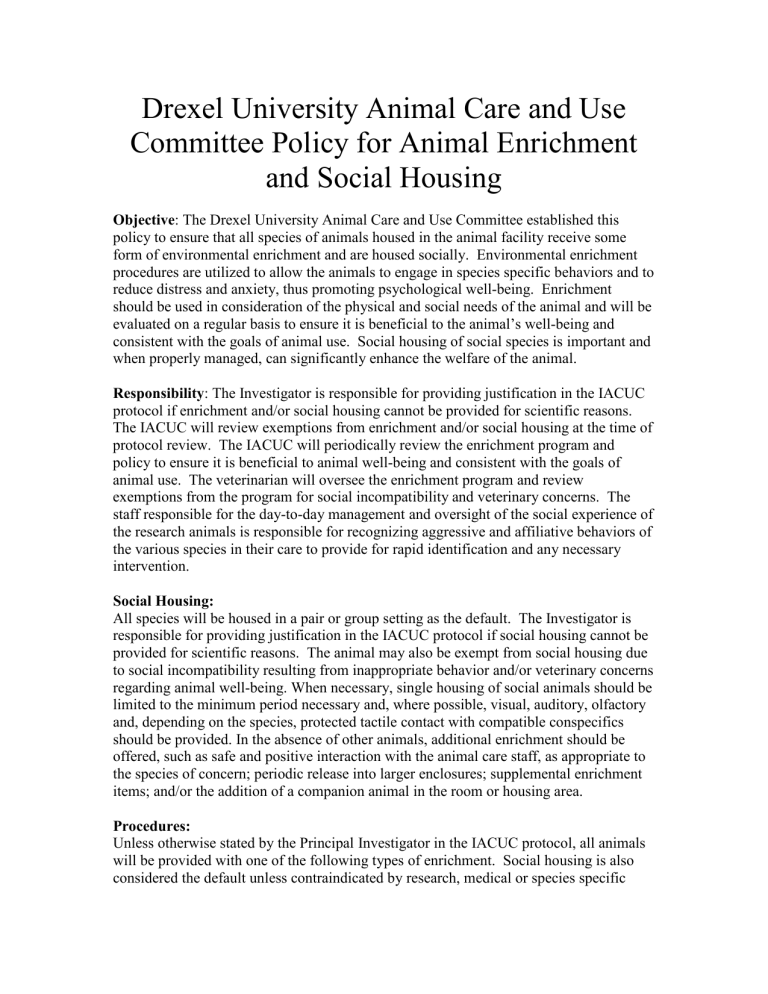
Drexel University Animal Care and Use
Committee Policy for Animal Enrichment and Social Housing
Objective : The Drexel University Animal Care and Use Committee established this policy to ensure that all species of animals housed in the animal facility receive some form of environmental enrichment and are housed socially. Environmental enrichment procedures are utilized to allow the animals to engage in species specific behaviors and to reduce distress and anxiety, thus promoting psychological well-being. Enrichment should be used in consideration of the physical and social needs of the animal and will be evaluated on a regular basis to ensure it is beneficial to the animal’s well-being and consistent with the goals of animal use. Social housing of social species is important and when properly managed, can significantly enhance the welfare of the animal.
Responsibility : The Investigator is responsible for providing justification in the IACUC protocol if enrichment and/or social housing cannot be provided for scientific reasons.
The IACUC will review exemptions from enrichment and/or social housing at the time of protocol review. The IACUC will periodically review the enrichment program and policy to ensure it is beneficial to animal well-being and consistent with the goals of animal use. The veterinarian will oversee the enrichment program and review exemptions from the program for social incompatibility and veterinary concerns. The staff responsible for the day-to-day management and oversight of the social experience of the research animals is responsible for recognizing aggressive and affiliative behaviors of the various species in their care to provide for rapid identification and any necessary intervention.
Social Housing:
All species will be housed in a pair or group setting as the default. The Investigator is responsible for providing justification in the IACUC protocol if social housing cannot be provided for scientific reasons. The animal may also be exempt from social housing due to social incompatibility resulting from inappropriate behavior and/or veterinary concerns regarding animal well-being. When necessary, single housing of social animals should be limited to the minimum period necessary and, where possible, visual, auditory, olfactory and, depending on the species, protected tactile contact with compatible conspecifics should be provided. In the absence of other animals, additional enrichment should be offered, such as safe and positive interaction with the animal care staff, as appropriate to the species of concern; periodic release into larger enclosures; supplemental enrichment items; and/or the addition of a companion animal in the room or housing area.
Procedures:
Unless otherwise stated by the Principal Investigator in the IACUC protocol, all animals will be provided with one of the following types of enrichment. Social housing is also considered the default unless contraindicated by research, medical or species specific
needs. Animals will each receive enrichment that will be provided by the animal care takers at the time the animal is housed, and each time the cage is changed or the housing unit is sanitized. For some species, efforts will be made to alternate enrichment items to provide novelty.
Rats, Mice and Hamsters – Nesting material, paper/plastic tubes, running wheels, paper/plastic huts, plastic shelter igloo, nutritional food treats. Group housing.
Guinea Pigs (excluding pregnant mothers) – Cardboard/plastic tubes, hanging stainless steel rings, food treats. Radios in the rooms to provide background sound. Group housing.
Pigs and Piglets – Hanging Nyla-bones and balls and food treats. Radios in the rooms to provide background sound. Human interaction. Group housing.
Cats – scratching post, balls, stuffed toys, sleeping mats, resting perch, food treats. Human interaction. Radio in the rooms to provide background sound.
Group housing.
Rabbits – Stainless steel mirrors, shapes and/or plastic balls. Radios in the rooms to provide background sound. Food treats. Group or pair housing.
Frogs – PVC tubes. Group housing.
Last review date: February 2015
